PinotFile: 8.10 February 1, 2010
|
Wine is Good News for Health in 2009
embrace education - not only terroirs and wine’s role in a healthy lifestyle, but also the risks and the need for responsible consumption.” Richard Mendelson, From Demon to Darling: A Legal History of Wine in America
Thirty-five years of research supports the notion that red wine, if consumed in moderation and combined with a healthy lifestyle that includes adherence to the Mediterranean diet and exercise, can offer significant health benefits. The scientific community believes that it is a combination of alcohol and various polyphenols that give red wine its healthful properties, and that red wine can best exert its effects over the course of a lifetime, that is, through regular, daily consumption in moderation with meals. Our primordial ancestors were the first to discover the benefits of imbibing alcohol. Orangutans, with whom we share 97% of our DNA, are known to gather durians, tropical fruits that are native to Southeast Asia, split them open and put them in a hole in the ground to ferment. After a suitable time, the level of alcohol in the decomposed fruit can reach the levels found in strong beers. The orangutans gorge themselves on the alcoholic fruit and become inebriated. Robert Walgers wrote about this “durian ceremony” in The World of Fine Wine (Issue 28, 2008). He said, “After feasting on the alcoholic pulp, the orangutans will have sex with partners they would not normally have slept with, they will fight old friends and bond with old enemies, they will stumble and fall only to get up smiling, they will laugh at each other and themselves, and they will throw their heads back and howl at their gods. Their emotions and passions will come to the fore. We recognize this ritual because most of us have been there before. It proves that alcohol consumptions is primordial, not cultural, as was often assumed, and that drinking for effect predated civilization, predated humanity.” Walgers goes on to point out that other primates such as gibbons, chimps and gorillas eat a diet rich in fruit, and imbibe significant amounts of alcohol through their consumption of overripe fruits. This behavior would lead one to conclude a role of alcohol in natural selection because the ability to smell alcoholic fumes given off by very ripe fruit would be an advantage in the wild as decomposing fruits are the most nutritious due to their high calorie ethanol content. The alcohol also may have had the advantage of acting as an appetite stimulant and creating more social interaction and procreation. Could it be that primates who lived longer and suffered less disease consumed alcohol regularly? The United States is projected to lead the world in volume of wine consumed by the year 2010. Appropriate education of the public about regular, moderate and responsible drinking of wine could have a highly beneficial effect on the health of this country. It is estimated that 80 million Americans have cardiovascular disease, or one in three people, and cardiovascular disease is our country’s number one cause of death and disability. About every 25 seconds an American has a coronary attack and nearly 2,400 Americans die of cardiovascular disease every day. Scientific research has strongly suggested that the moderate intake of alcohol, particularly as red wine, can reduce the risk of atherosclerosis and heart attacks by up to 70% when it is incorporated into a healthy lifestyle in which one avoids smoking, stays lean, exercises regularly (30 minutes a day) and follows a diet that includes vegetables and fruits, whole grain foods, fish, lean meats, low-fat dairy products and minimal salt intake. As recently as 1991, the federal government’s Dietary Guidelines for Americans advised adults not to drink at all. Alcoholic beverages were said to have “no net health benefit, were linked with many health problems, were the cause of many accidents, and could lead to addiction.” In the same year, Morley Safer hosted a television feature on 60 Minutes about a health conundrum known as the “French Paradox.” Safer was a Francophile and his neighbor was the French-born chef, Jacques Pépin, who told Safer that the French had a very low rate of cardiovascular disease. The program spotlighted two medical experts: Curtis Ellison, M.D., Professor of Preventive Medicine and Epidemiology at Boston University School of Medicine, and Serge Renaud, M.D., Professor of Cardiology and Research Director at Sagalen University, Bordeaux, France.
 The French Paradox was that the French consumed a diet high in saturated fat, smoked more, and exercised less than Americans, but the French had 40% fewer heart attacks and lived on average about two and a half years longer. The French drank moderate amounts of red wine regularly with meals, they ate more fresh fruit and vegetables, ate more leisurely and snacked little, ate leaner and smaller portions of red meat, consumed dairy fat as cheese rather than milk, and used more olive oil and less butter in their cuisine. Ellison told Safer that of all of these factors, the association between improved cardiovascular health and longevity and moderate and regular consumption of wine with meals was strongest and supported by the most scientific evidence. The French researcher, Serge Renaud, had discovered a relationship between the low rate of cardiovascular disease and moderate wine intake in the French population, and supported Ellison’s beliefs in the telecast. Renaud thought that the negative effects of saturated fats were counteracted by the intake of wine. At the end of the show, Safer asked Renaud to what he attributed the observed decreased mortality rate from cardiovascular disease among the French. Renaud replied, “I think it is the alcohol.” Safer ended the program holding up a glass of red wine and said, “The answer may be in the glass.” Approximately 33.7 million Americans watched the show. Most were surprised by the idea that drinking might be good for you. Within one month, the sales of red wine increased by 44% and E. & J. Gallo Winery had to put their leading seller, Hearty Burgundy, on allocation. Research has now shown that the health benefits of wine are due to alcohol and the polyphenolic compounds found in the skin and seeds of grapes. It appears that the high levels of polyphenols in red wine give it superior health advantages over other alcoholic drinks. Polyphenols in red wine are extracted by the alcohol formed during the fermentation process. The alcohol also keeps the polyphenols chemically stable in wine. White wine grapes have small amounts of polyphenols in their skins, but since the skins and seeds are usually not used in white wine vinification, white wines have less polyphenols (40 mg in one glass compared to 200 mg in one glass of red wine). It is estimated that the polyphenol content of the average diet can be enhanced by 40% through the intake of two glasses of red wine a day. Grapes, grape juice and raisins are not equivalent substitutes for wine as they lack the alcohol that keeps polyphenols firmly fixed in solution. Their resulting low polyphenol content would require the ingestion of large quantities resulting in the intake of significantly more calories to obtain the same benefit as wine. In 2005, the United States government conceded in the Dietary Guidelines published that year that alcohol in moderation may offer health advantages. “Alcohol may have beneficial effects when consumed in moderation in middle-aged and older adults. The lowest all-cause mortality occurs at an intake of one to two drinks per day. The lowest coronary heart disease mortality also occurs at an intake of one to two drinks per day. Morbidity and mortality are highest among those drinking large amounts of alcohol. Those who choose to drink alcoholic beverages should do so sensibly and in moderation - defined as the consumption of up to one drink per day for women and up to two drinks per day for men. It is not recommended that anyone begin drinking or drink more frequently on the basis of health considerations.” In contrast Great Britain’s Royal College of Surgeons advises dry British subjects to “get wet for the good of their hearts” (the first government in the world to make such a recommendation). See page 5 to read the results of the latest study by Curtis Ellison, M.D. on the potential reduction in mortality among those abstainers who begin drinking moderately. In the pages to follow, I will summarize peer-reviewed, scientific studies published in print, online or presented in scientific forums in 2009 along with other relevant reports that contribute to our current understanding of the roles alcohol and in particular red wine play in our health. For the purposes of understanding “moderate drinking,” which is frequently referenced in the following reviewed research, a few definitions need to be understood. A standard drink (or unit) is not specifically defined in the Dietary Guidelines for Americans but it is generally considered to contain 17.7 ml (14 grams) of ethanol which is equivalent to 12 ounces of beer, 5 ounces of wine, or a shot of 8-proof distilled spirits. The definition of a standard drink differs widely among countries. For example 1 US ‘drink’ = 1.5 UK units. A full bottle of wine contains roughly 5 to 7 drinks depending on the wine’s alcohol percentage. To determine the number of drinks in a particular bottle of wine, multiple 750 ml by the alcohol percentage and divide by 17.7. For example, one drink from a bottle of 13.0% alcohol wine will equal 750 ml x 0.13 = 97.50 divided by 17.7 = 5.5 drinks. A bottle of 16% alcohol wine will contain 6.8 drinks or about 1 more drink than a bottle of 13% alcohol. This illustrates the fact that alcohol percentage does make a difference when the consumer is looking to drink in moderation.
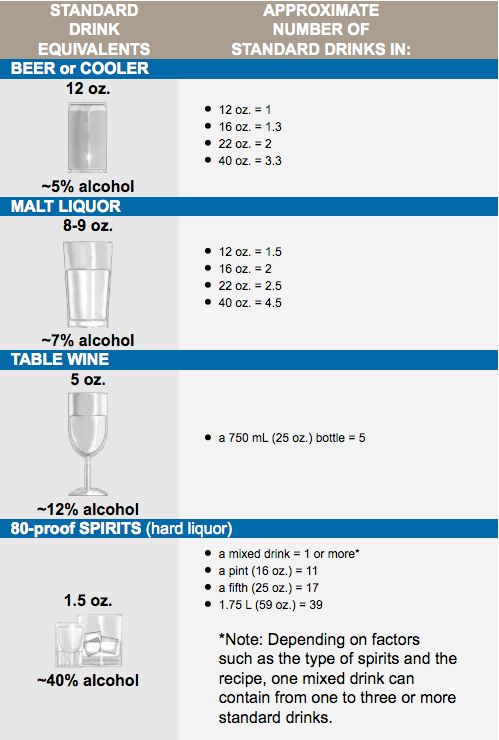 The definition of levels of drinking vary, but usually moderate drinking is defined as no more than 1 drink per day for women and no more than 2 drinks per day for men. Some liberal definitions set the limit at less than 3 drinks per day. You do not get additional beneficial effects from drinking more than this. Heavy drinking is defined as 3 or more drinks per day. To stay within the confines of moderation, a drinker would want to scale back the volume of drinking when imbibing a wine with a higher alcohol percentage, or reach for a lower alcohol wine.
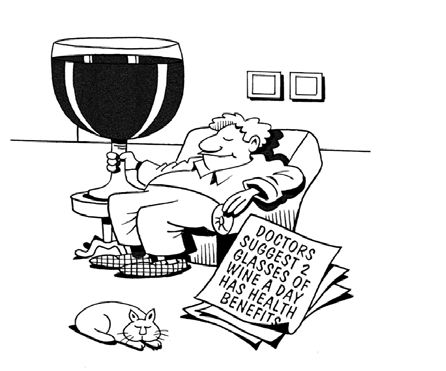 Good wine challenges our human frailties, because if it tastes good, we want to drink more of it. Over drinking or binge drinking (more than 4 drinks on a single occasion for men or more than 3 drinks for women) should be avoided as it can lead to a number of health problems including sudden death from high blood pressure, heart attack, cardiac arrhythmia, or stroke. You are better off not drinking at all than drinking too much. Constant over drinking can result in cardiac myopathy, cirrhosis of the liver, acute alcoholic hepatitis, osteoporosis, chronic gastritis, irritable bowel syndrome, tremors, insomnia, nightmares and night sweats, dementia, cancer of the mouth, pharynx, larynx, esophagus, stomach, liver, colon and breast. NIH data shown below, although outdated, is still relevant, and shows the relative increased risk of certain health conditions in heavier drinkers (2 or more drinks per day). As an informed physician, I am with the majority of health experts who are confident that wine in moderation is good for you, especially for middle-aged to older people. My prescription is 5 to 10 ounces of red wine to be enjoyed most days and consumed with food. The cardioprotective benefits of wine are most pronounced when wine is drunk daily and regularly with meals. That said, wine drinking may not be advisable for everyone, and one should consult with their doctor about the effects of wine consumption on their health.
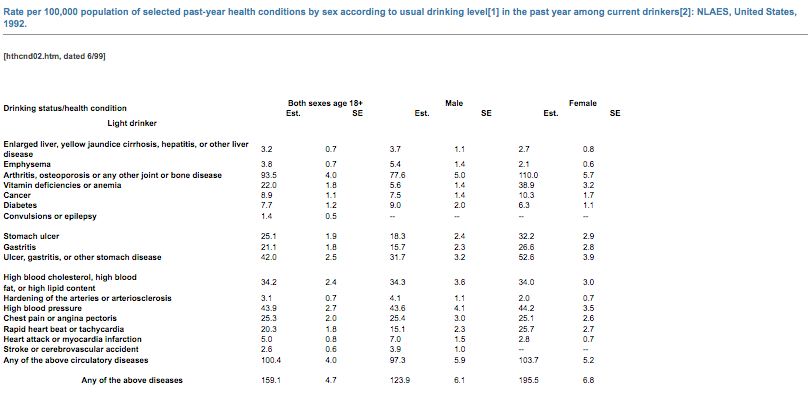
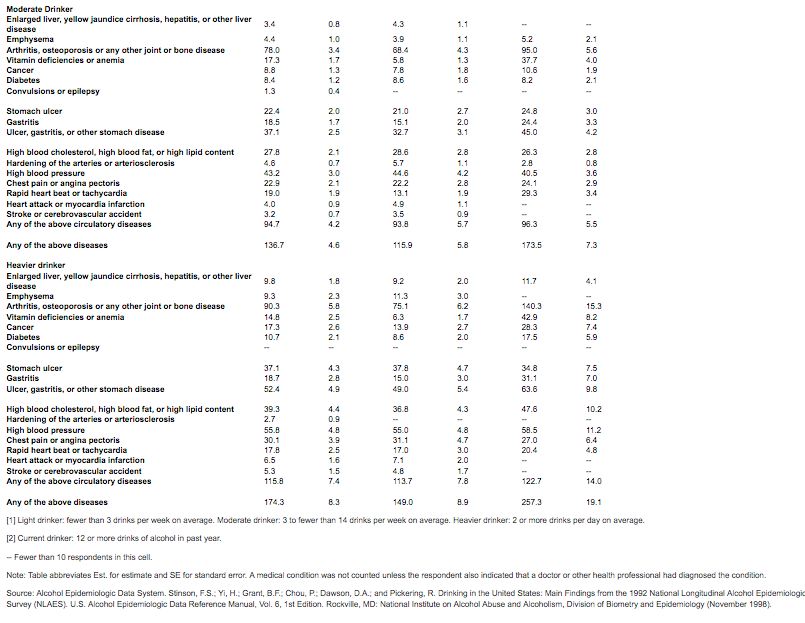
Brief Abstracts of Wine and Health Related Research Published in 2009
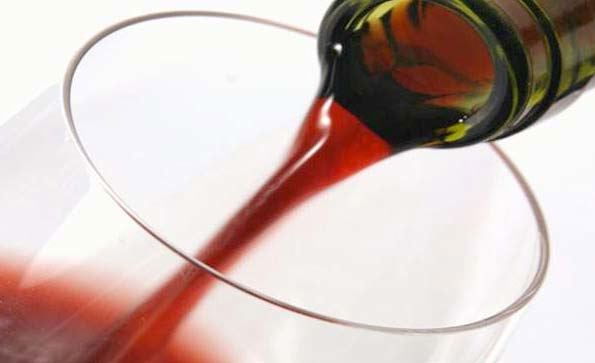 A major challenge in demonstrating scientifically the health benefits of wine is that randomized controlled studies are difficult to perform. As noted American researcher, Arthur L. Klatsky, M.D., has reported, “The association of a behavioral trait such as alcohol drinking with a health outcome in any study could be due to chance, due to bias (confounding), or causal. While a chance relation is always possible, statistical evaluation can render the likelihood vanishingly small. The accepted standard for elimination of confounding and establishment of likely causality is the double-blinded randomized controlled trial (RCT). Problems in blinding and prescription of long-term behavior, plus the perceived risk of harmful effects have so far precluded long term RCT studies with chronic disease endpoints. As a result, the issue of how well we can infer causality from observational data remains a formidable challenge. Without RCTs, some scientists assert that confounding is involved in the data indicating beneficial alcohol and health relationships. While even well performed observational studies cannot completely exclude possible genetic or environmental predilections to health outcomes, a strength of many is involvement of large representative populations. Criteria exist that can establish a very high probability of causality in these data.” Dr. Klatsky presented a paper at the 5th International Wine and Heart Health Summit, July 15-18, 2009, titled, “Beer, Wine & Alcohol: Scientific Truths.” He pointed out what he considers to be scientifically verified truths. Heavy drinking has an established casual relationship to high blood pressure. There is an unresolved relationship of high blood pressure to moderate drinking with under reporting accounting for most reports of increased blood pressure in moderate drinkers. The risk of hemorrhagic stroke is increased by alcohol intake but the risk of ischemic stroke is reduced by alcohol. Heavy drinkers are twice as likely to develop atrial fibrillation (a rapid, irregular heart beat that is potentially fatal). Wine drinkers are more protected against cardiovascular disease with most of the effect coming from alcohol. Death from cardiovascular disease is lowest among red wine drinkers, followed by beer drinkers and spirits drinkers. The pattern of drinking is important. The risk threshold in women for breast cancer is less than 1 drink per day. Women who drink more than 1 drink per day have a slight increased risk of breast cancer. Among women survivors of breast cancer, it is recommended that they drink less than 1 drink per day, 2-3 drinks maximum per week.
Longevity Journal of Epidemiology and Community Health, May 2009. A Dutch study found that men who were daily light to moderate drinkers of any type of alcohol gained two and a half years of life expectancy and a lower risk of dying from stroke and cardiovascular disease. Men who drank only wine, up to half a glass a day, lived about two and a half years longer than those who drank beer and spirits, and nearly five years longer than abstainers. Most of the wine consumed among the men studied was red. The results were independent of socioeconomic status, diet and lifestyle habits. Journal American Geriatric Society, June 2009. In a study of U.S. adults aged 55 and older, moderate drinkers (1 drink per day) had better risk factor profiles than nondrinkers, including higher socioeconomic status and fewer functional limitations. These factors explain much of the survival advantage associated with moderate alcohol use, but moderate drinkers maintain their survival advantage even after adjustment for these factors with a 28% lower death rate. Marie Claire, online, 2009. Suzanne Thomas, PhD, of the Charleston Alcohol Research Center, says that getting “tipsy” just once a month triples heart disease risk in women. Alcohol is more toxic in women because they are smaller, they have more body fat which processes alcohol more quickly, and they have lower levels of stomach enzymes that metabolize alcohol than men do.
Cardiovascular Disease Many epidemiological studies have demonstrated an inverse association between moderate alcohol intake and cardiovascular risk, in particular coronary artery disease and ischemic stroke. In addition, several vascular diseases are known to occur less frequently in moderate drinkers, whereas excess drinking is unquestionably harmful. Alcohol effects several biochemical factors that have potential cardioprotective benefits, including lipids, platelet aggregation, fibrinogen, tissue-plasminogen activator and inhibitor, and omega-3 fatty acids. Alcohol intake increases the HDL (‘good’ cholesterol) in the blood, which is considered inversely related to coronary artery disease. HDL removes cholesterol from arterial walls, facilitates its transportation back to the liver, thereby protecting against atherosclerosis. In addition, alcohol is assumed to have an antioxidative effect on LDL (‘bad’ cholesterol), protecting against the formation of atherosclerotic plaque (this effect is less supported in the literature). Grape polyphenols have additional effects that reduce atherosclerosis including inhibition of oxidation of LDL, improvement of endothelial function, lowering of blood pressure, reducing inflammation, and making active novel proteins that prevent cell senescence such as Sirtuin 1. American Journal of Clinical Nutrition, January 2009. High dietary and blood omega-3 fatty acids are protective against coronary heart disease and sudden cardiac death. A European research project, IMMIDIET, found that moderate wine drinking boosts the production of omega-3 fatty acids in plasma and red blood cells. The authors of the study speculated that components of wine other than alcohol, specifically polyphenols, might exert these effects. Alcohol Clinical Experimental Research, February 2009. Myocardial infarction (heart attack) decreased with increased frequency of drinking, but increased as drinking dosage increased. Rates of increasing myocardial infarction risk associated with drinking dosage were twice as high among women as they were among men. Lower myocardial infarction risk was associated with consuming < 4.55 drinks per drinking day for men and < 3.08 drinks per drinking day for women, increasing after these cross over points were exceeded.
 Los Angeles Times, May 18, 2009. The Framingham Heart Study which began in 1948 and has become the longest-running heart health study in the world, has revolutionized our understanding of cardiovascular disease. The study is now on its third generation of subjects. In 1974, the National Institutes of Health (NIH) blocked the publication of findings from the Framingham Heart Study which showed a striking reduction in coronary heart disease from moderate drinking in men and women. This ruling was based on concerns that such information might increase alcohol abuse. The NIH removed all reference to alcohol and told researchers if they must comment, they were to say, “No effect.” In 1986, the study revealed a classic J-shaped curve for alcohol intake relative to risk of cardiovascular death in men and women followed for 24 years. Light drinkers were 70% less likely to have a heart attack than abstainers and moderate consumption of alcohol, rather than abstaining, had more effect on heart health than even reductions in blood pressure and cholesterol. The Framingham Study’s results showing the benefits of moderate drinking on reducing the risk of dying from cardiovascular disease were finally published in 1991. Since 1991, there have been many studies that have shown a reduction in cardiovascular disease in moderate drinkers, with wine being the most protective. The J-shaped curve is more prominent in older age groups, indicating that the net sum of detrimental and beneficial effects of moderate alcohol intake is predominantly detrimental amongst the younger and beneficial amongst the older.
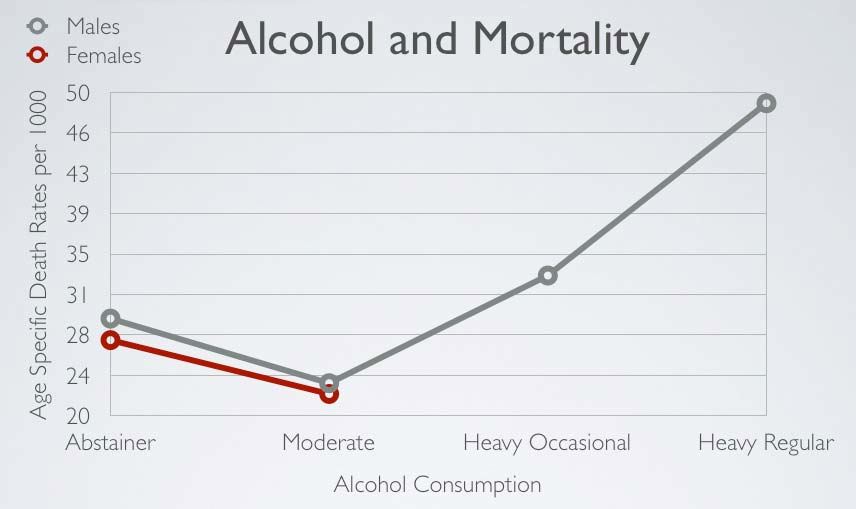 Expert Review Cardiovascular Therapy, May 2009. Arthur Klatsky, M.D., a respected researcher at Kaiser Permanente Oakland Medical Center in California, has published some of the groundbreaking research on the health benefits of alcohol and wine. In this published review, he notes that light to moderate drinking is probably unrelated to an increased risk of any cardiovascular condition and is related to lower risks of coronary artery disease, ischemic stroke and coronary artery disease related heart failure. A protective alcohol-coronary artery disease hypothesis is supported by plausible biological mechanisms attributable to ethyl alcohol. Possible non-alcohol beneficial components in wine (especially red) could explain the extra protection of wine, but a healthier pattern of drinking or more favorable risk traits in wine drinkers may also be involved. Klatsky recommends that advice regarding the advisability of alcohol drinking for health needs be individualized according to specific risks and benefits. Journal Epidemiology Community Health, July 2009. The effects of long term alcohol intake and types of alcoholic beverages consumed on cardiovascular mortality and life expectancy at age 50 was investigated in the Zutphen Study, a cohort of 1373 men born between 1900 and 1920 and examined repeatedly between 1960 and 2000. The results indicated that long-term light alcohol intake (less or equal to 20 grams per day, about 1.5 drinks) lowered cardiovascular and all-cause mortality risk and increased life expectancy. The results could not be explained by differences in socioeconomic status. Life expectancy was about 5 years longer in men who consumed wine compared with those who did not use alcoholic beverages. Future Cardiology, September 2009. This review discusses the mechanisms supporting the protective effect of moderate alcohol intake against cardiovascular disease, and epidemiological evidence concerning the relationship between alcohol dosing and vascular and all-cause mortality. Journal of Nutrition, September 2009. The available data strongly support the recommendation that a diet rich in fruits and vegetables, including grapes, can decrease the risk for cardiovascular disease. British Journal of Nutrition, November 30, 2009. A study conducted at the University of Reading in cooperation with additional biochemical and molecular biology research centers in Reims, France, found that people who drank moderate amounts of Champagne daily received beneficial effects on the circulatory system similar to those observed for drinkers of red wine. This is presumably because of the polyphenols derived from the use of red and white grapes in the production of Champagne. Blood samples taken after drinking Champagne showed elevated nitric acid, a molecule that is known to reduce the risk of stroke and heart disease. Journal of Cardiovascular Pharmacology, pending. This report reviews seventy studies that have found improved cardiovascular health with moderate drinking. The authors theorize that the ability of the body to absorb resveratrol can be improved by other red-wine compounds such as quercetin and lead to storage of significant amounts of resveratrol in the liver and kidneys, making it bioavailable for cardiovascular effects. This theory would suggest that a synthetic resveratrol pill would be ineffective.
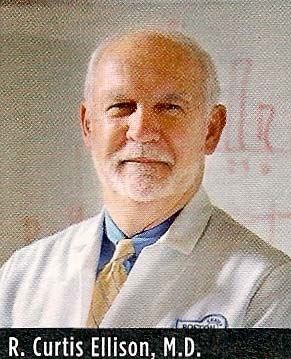 A study was presented at this year’s International Wine and Heart Health Summit, July 15-18, 2009, by Curtis Ellison, M.D., Professor of Medicine and Public Health, Boston University School of Medicine. Ellison said that he and his colleagues are preparing a report using official death rates in the United States to determine the absolute risk of dying for adults 45-75 years of age, according to whether they are abstainers or consume alcohol moderately (no more than two drinks per day for men, and one drink per day for women). After an extensive review of the scientific literature, the researchers assumed that if a non-drinking person began to consume alcohol moderately, he or she would reduce his or her risk of coronary heart disease by 33.3%, and would reduce their risk of stroke by almost as much. Other diseases related to arteriosclerosis would be reduced, but women might show a 10% increase in their risk of breast cancer. Knowing that a patient may not follow his doctor’s suggestions and begin to drink heavily, equations were factored in that approximately 5% of patients might do this, and if so, would increase the risk of cirrhosis of the liver, death from drunk driving, and an increase in the risk for breast cancer for women. Taking all these risks into the calculations, they found that for all women from age 55 and for all men aged 45-75, individuals who began to drink had lower mortality rates. The results indicate that a non-drinking patient would have a reduced risk of dying over the following 10 years if he began to drink moderately, even if 5% of such subjects become alcohol abusers. As an example, for a 65 tear old non-drinking man in the United States, government statistics show that 278 will die over the next 10 years. If these men all became moderate drinkers, only 251 would die, a reduction of about 10%. The data are based on the consumption of any type of alcoholic libation. Ellison believes that for many patients, doctors can encourage moderate alcohol consumption, especially the daily consumption of a glass of wine, without any real risk of the patient abusing wine. In doing so, their risk of heart disease could be markedly reduced and their longevity enhanced.
Cognitive Function (Brain) Alcohol Clinical Experimental Research, February 2009. In over half of nearly 45 reports since the early 1990s, significantly reduced risks of cognitive loss or dementia in moderate, non-binge consumers of alcohol (wine, beer, liquor) have been observed, whereas increased risk has been seen in only a few studies. Experimental evidence indicates that moderate alcohol levels can exert direct neuroprotective actions against ischemia and beta-amyloid, a toxic protein intimately associated with Alzheimer’s. Moderate alcohol exposure appears to trigger analogous mild stress-associated, anti-inflammatory mechanisms in the heart, vasculature, and brain that tend to promote cellular survival pathways. Journal of Nutrition, January 2009. Oxford University and University of Oslo researchers found that wine, dark chocolate and tea, taken in moderate amounts and in combination, improve the cognitive function in the elderly. The effect is thought to be due to polyphenols which are found in high concentration in grapes, cocoa beans and tea leaves. The effect was maximal when small amounts of all three were included in the diet. Consuming large amounts of wine, dark chocolate or tea did not further improve cognitive function. Journal of Alzheimer’s Disease, pending. Polyphenols in red wine that help prevent Alzheimer’s are absorbed better after continued ingestion. A study on rats found that the amount of polyphenols from grape seed extract that can reach a rat’s brain is as much as 200 percent higher on the tenth consecutive day of feeding as compared to the first. One of the study’s scientists, Mario Ferruzzi, said, “This shows that reasonable and constant consumption of these products may be the way to go, rather than single, high doses, similar to drugs. It’s like eating an apple a day, not a case of apples over two days every month.” Polyphenols are thought to prevent the formation of beta-amyloid protein which creates the plaque in the brain that causes Alzheimer’s disease.
Gastrointestinal Gastroenterology, March 2009. A study conducted at Kaiser Permanente in Oakland, California, found that drinking one glass of wine a day reduced the risk of Barrett’s esophagus (an erosion of the esophageal lining from constant heartburn that often leads to cancer) by over 50 percent. Heavy drinking of any kind of alcohol may increase the risk. Science Daily, June 2, 2009. Health researchers at the University of East Anglia’s School of Medicine, Health Policy and Practice (UK) confirmed that alcohol intake has a protective effect against the formation of gallstones, and established that each unit of alcohol consumed per week reduced the chances of gallstones by three per cent. Drinking about one unit of wine (6 ounces) per day reduced the risk of gallstones by 32 percent. The more wine the study participants drank, the lower the risk, but the dangers of over drinking far outweigh the benefits. Toxicology, November 9, 2009. Portuguese researchers found that polyphenols (catechin, epicatechin, and quercetin) in red wine cause the release of nitric oxide in the stomach. In small amounts, nitric oxide can aid digestion by improving blood flow and relaxing the walls of the stomach, allowing nutrients to more freely enter the blood. Alcohol may also stimulate the production of nitric oxide by reacting with nitrites in food to convert them into ethyl nitrite, which then releases nitric oxide.
Skeletal System American Journal of Clinical Nutrition, February 25, 2009. Nutritionists at Tufts University in Massachusetts found that those who drank a glass or two of wine a day had greater bone mineral density than nondrinkers.
Metabolic Journal of Medicinal Food, December 2008. The flavonoids, quercetin and resveratrol, both found in red wine, in combination with genistein, which is in soybeans, caused death of fat cells in low concentrations. Previously, this effect was seen with resveratrol alone only in very large doses. This research may have practical applications in the management of obesity. Atherosclerosis, June 2009. A meta-analysis of 14 publications on the relation between alcohol consumption and the prevalence of metabolic syndrome found that responsible alcohol intake appeared to be associated with a reduced prevalence of metabolic syndrome. Favorable metabolic effect seemed to be restricted to alcohol consumption of less than 20 grams per day among women, and of less than 40 grams per day among men. Metabolic syndrome is the name for a group of symptoms (abdominal obesity, high blood pressure, high triglycerides, insulin resistance and low HDL ‘good’ cholesterol) that occur together and promote the development of coronary artery disease, stroke and type 2 diabetes mellitus. Metabolic syndrome is becoming more common in the United States.
Cancer Clinical Cancer Research, January 2009. Anthocyanidins in grape seed extract appear to activate proteins inside cancer cells that regulate the cells’ life cycle. Exposing leukemia cells to grape seed extract caused apoptosis or cell death. The study suggests that grape seed extract may have therapeutic applications in the treatment of leukemia and other blood-borne cancers. It is not clear that ingesting wine can have a similar effect. Journal of the National Cancer Institute, March 4, 2009. This was a controversial study from the Cancer Epidemiology Unit at Oxford University. It examined the rates of cancer in more than 1.28 million women, ages 50 to 64 in the UK and compared weekly drinking habits with the incidence of cancers. They reported that any alcohol consumption was linked to a higher risk of cancer of the pharynx, esophagus, larynx, rectum, liver and breast. The risk increased with each additional drink per day. Cancers of the mouth and throat only increased for women that also smoked. Alcohol decreased the incidence of non-Hodgkin’s lymphoma, thyroid cancer and renal cell carcinoma. Wine drinkers had a lower risk of liver cancer and colon cancer compared to mixed beverage drinkers. Some doctors and scientists have praised the size of the study, but cautioned that the methodology had limitations and more research is necessary. For example, the study did not ask women about daily drinking habits, only noting weekly drinking habits and divided the number of drinks by seven. This would not distinguish between consuming one drink daily versus seven drinks on one weekend night. National Institutes of Health News, online, March 23, 2009. Many people of East Asian descent have a deficient enzyme, aldehyde dehydrogenase 2 (ALDH2), that causes facial flushing, nausea, and rapid heartbeat when they drink alcohol. Scientists from the National Institute on Alcohol Abuse and Alcoholism and Japan’s Kurihama Alcohol Center now report that heavy alcohol consumption in this population greatly increases the risk for esophageal cancer. The alcohol flushing response is a clinically useful biomarker of genetic susceptibility to esophageal cancer risk from alcohol. Cancer of the esophagus is very deadly, with five-year survival rates ranging from 12 to 31 percent. Estimates are that 540 million people have this alcohol related increased risk for esophageal cancer and they should be advised to limit their alcohol consumption. Individuals with the ALDH2 gene variant that results in an inactive enzyme who drink the equivalent of 33 or more U.S. standard drinks per week have an 89-fold increased risk of esophageal cancer compared to non drinkers. American Association of Cancer Research Meeting, April 2009. An epidemiology study found that those women with non-Hodgkin’s lymphoma who drank wine regularly for twenty-five years before the diagnosis, had higher survival rates five years after diagnosis compared to nondrinkers. Women who drank beer or spirits had no added benefit. Alcohol and Alcoholism, July, August 2009. This study from Denmark confirms the well-established association between high alcohol intake and cancer of the upper digestive tract and liver. In addition, the results indicate a significantly elevated occurrence of renal cancer, but not of breast cancer and colorectal cancer, in patients with alcohol use disorders. Cancer Detection and Prevention, August, 2009. A study conducted by Montreal scientists showed that moderate drinking lowers the risk of several cancers but heavy drinking increased the risk of esophageal, stomach, colon, liver, lung, and prostate cancer in men. Men who drank between one to six glasses of wine per week showed a small increased risk of rectal cancer (7 percent) and melanoma (9 percent), but for most other types of cancers, moderate wine drinkers had a lower risk. Beer and spirits drinkers appear to be at greater risk for cancers compared to wine drinkers, a conclusion that the study’s investigators could not explain. International Journal of Radiation Oncology Biological Physiology, August 2009. The drinking habits of women undergoing radiation therapy for breast cancer were studied for skin damage. Women who drank a glass of wine per day had the least amount of skin damage, with these moderate consumers having 75 percent less skin tissue damage than teetotalers. The results would indicate that wine may have a radio protective effect. British Journal of Cancer, October 2009. Scientists at the National Cancer Institute found that any type of alcoholic beverage taken in moderation will reduce the risk of thyroid cancer. The mechanism is unclear, but is thought to be related to alcohol’s ability to protect the thyroid gland by preventing the buildup of hormones in the gland by helping it regulate the rate at which it releases hormones into the body to regulate metabolism. Thyroid cancer is relatively rare and the researchers do not recommend alcohol consumption as a preventive measure. A recently completed study of the role of wine, beer and spirits in occurrence of breast cancer was reported at the International Wine and Heart Health Summit, July 15-18, 2009, by Curtis Ellison, M.D., Professor of Medicine and Public Health, Boston University School of Medicine. Using data from the Framingham Study that followed more than 5,000 women for 25 to 45 years, Ellison and his cohorts found that women who have consumed wine or other alcoholic beverages moderately over a lifetime do not have increased rates of breast cancer, but rather tend to have slightly lower rates.
Pregnancy Orange County Register, March 4, 2009. 15% of women living and self-reporting in Orange County, California used alcohol sometime while pregnant. Irvine gynecologist Felice Gersh said she suspects a higher percentage of women have a sip of wine on occasion when they are pregnant. She said, “Nobody is going to advocate drinking while your pregnant, ever. But the reality is, if you had half a glass of Champagne and you were six months pregnant, it isn’t going to do anything.” Non-Hispanic white women and women with higher education were more likely to have alcohol. Compared with national rates, pregnant women in Orange County reported much lower prevalence rates for alcohol use than pregnant women across the country. Journal Medical Ethics, May 2009. It is argued in this article that the total abstinence policy in pregnancy advocated by the UK’s Department of Health, and even more stridently by the British Medical Association, sits uneasily with recent data and is far from ethically unproblematic. The University College London studies found that low levels of alcohol did not contribute to adverse behavioral outcomes and may even have a positive contribution in some cases is unlikely to be the last word on the subject. SCNow.com, online, May 26, 2009. Many American women still drink during pregnancy. The number of pregnant women who drank between 1991 and 2005 did not decrease. One in eight drink alcohol and one in fifty take part in binge drinking.
Sexual Activity Decanter.com, March 24, 2009. A study from Florence, Italy, showed that drinking one to two glasses of red wine a day increased female libido resulting in more sexual activity. Dark chocolate had a similar positive effect on female sexual desire. Journal of Sexual Medicine, October 2009. Women who drink one to two glasses of red wine a day may experience improved sexual health and function. The study was carried out at the University of Florence in Italy. International Society for Sexual Medicine, January 2009. Researchers at the University of Western Australia have found that moderate drinking was associated with lower levels of erectile dysfunction. This is not surprising, since it is known that moderate alcohol consumption is associate with better cardiovascular health and similarly, may improve the function of the penis which is a vascular organ. Men who drank alcohol in moderation but did not smoke were almost 50 percent less likely to report erectile dysfunction than smokers. The researchers point out that abstainers should not start drinking with the aim of improving their sexual performance. The study had limitations since there was no followup to the survey and men are notoriously dishonest when answering questions about impotence.
Miscellaneous In early January, 2010, Great Britain’s government banned promotions that encourage heavy drinking as well as drinking games such as the “dentist’s chair,” where alcohol is poured directly into a person’s mouth. Great Britain’s alcohol consumption has risen 40% over the last 40 years and binge drinking is on the rise. There has been pressure on Great Britain’s government to impose higher prices on inexpensive booze. In this country as well there has been legislation passed to ban drinking games such as beer pong in bars and restaurants. WineSpectator.com, April 28, 2009 An online Global Vinexpo Survey indicated that women who drink wine frequently prefer red wine (60 per cent), drink it most often at the end of the day to relax or with meals, and buy wine based on price and grape variety. 97 per cent of respondents felt that wine was an important part of a healthy, balanced diet and lifestyle. Journal of Internal Medicine, April 2009. A very good review of the negative and positive effects of alcohol on health written by noted alcohol researcher, M. Gronbaek of the Center for Alcohol Research at the University of Southern Denmark in Copenhagen, Denmark. The sensible drinking limits, used in both the UK and Denmark, of a maximum of 21 drinks per week for men and 14 drinks per week for women seem valid. American Journal of Health Promotion, September/October 2009. Alcohol users were found to exercise more than abstainers, and the more people drink, the more they exercise. No distinction was made among the different types of alcoholic beverages. The authors of the study concluded, “If responsible drinkers are using exercise to partially counteract the caloric intake from alcohol, that is not such a bad thing.”
Antagonists New York Times, June 2009. This story reported on the debate over the assumption that drinking alcohol in moderation is good for you. Two areas of agreement are highlighted: (1) heavy drinking is bad for you, and (2) the cardiovascular benefits and promotion of good cholesterol from moderate drinking apply after the age of 45 when heart disease is more of a risk in men and women. Wines & Vines, October, 2009. The World Health Organization (WHO), a branch of the United Nations, is writing a “Global Strategy to Reduce Harmful Use of Alcohol.” A preliminary draft has some alarming messages and includes the following wording. “Alcohol is, however, a toxic and psychoactive substance that can lead to dependence, and its harmful use has serious effects on public health. Harmful use of alcohol is one of the main risk factors for poor health globally.” The draft suggests that harmful alcohol use should be controlled by decreasing its consumption by increasing taxes on alcohol, lowering the blood-alcohol limit to . 05% for impaired driving, and restricting the marketing of alcohol beverages. Bill Nelson, president of WineAmerica, the national association of wineries, points out that the WHO draft does not clearly point out the difference between abusers of alcohol and moderate drinkers. If the measures recommended by WHO are instituted, the result might lead to more health problems for countries that adopt them. Final wording of the WHO draft is scheduled for release in May 2010. Decanter.com, June 17, 2009, November 19, 2009, and September 22, 2009. A few years back the French government developed an anti-wine stance. An ad campaign was launched accusing wine as a cause of cancer. Tough restrictions on advertising wine in print were instituted and touting wine on the Internet and television was banned altogether. Known as the Evin Law, the regulations were passed in 1991, but revised in 2005. In 2005, the French daily newspaper, Le Parisien, was fined over $6,000 for publishing an article about Champagne without including the warning statement: “L’abus d’alcool est dangereux pour la sante,” “The abuse of alcohol is dangerous to health.” This statement is mandatory for advertising. In February 2009, the French National Cancer Institute (INCA) published a document distributed to doctors based on data collected from 500 international cancer studies claiming that drinking alcohol increased the risk of cancer by 9% to 168% depending on the amount of consumption regardless of whether the drink was wine, beer or spirits. The document also stated that wine offered no health benefits against cancer. INCA advised total abstinence. Not surprisingly, this caused an outrage in the wine regions of France. In September 2009, the High Council for Public Health, France’s most senior health body, officially disputed the study released by INCA, and ruled that drinking in moderation may offer protective effects against cardiovascular disease, and improve a drinker’s quality of life. Earlier in 2009, the Senate in Paris amended the Evin Law, allowing alcohol advertising on the Internet. Beginning in early 2010, a French pro-wine lobby has been formed that will support in-depth studies by scientists and doctors on the possible health benefits of wine and distribute accurate information on wine and moderate drinking. BMC Public Health, September 2009. A study of 4302 Koreans aged 50 years and over found that consumption of alcohol had little effect on carotid plaque formation in women. Men, however, were noted to have a 97 percent increased plaque buildup and significant increase in arterial wall thickening of the carotid artery when they drank more than three alcoholic drinks per day. The researchers theorize that once plaque begins to accumulate inside the arterial wall, heavy drinking accelerates the process. Under reporting by women (the Korean culture frowns on drinking among women) may have led to errors in the outcome.
Resveratrol Update
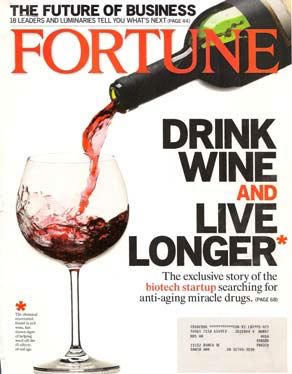 Recent research has linked resveratrol to a number of health benefits including lower LDL cholesterol levels, prevention of blood clots, delaying the aging process and forestalling many gerontological diseases by revving up enzymes called sirtuins, reduction of the risk of Alzheimer’s, counteracting obesity, prevention of diabetes, providing some protection against radiation poisoning (see report under Cancer above), improved erectile function, boosting stamina, reducing lung inflammation stemming from chronic pulmonary disease, and helping fight off certain types of cancers. The problem is that much of the testing with resveratrol has been performed in the laboratory on mice, and they have been dosed with huge amounts of it. Conclusive clinical trials on humans have yet to be performed. Researchers at Harvard Medical School and the National Institutes on Aging have found that red wine extract can offset the negative effects of a high-calorie diet in mice while significantly extending their life span. The catch is that a 150-pound person would have to drink 750-1,500 bottles of wine a day to get the equivalent dose of resveratrol used in the studies.
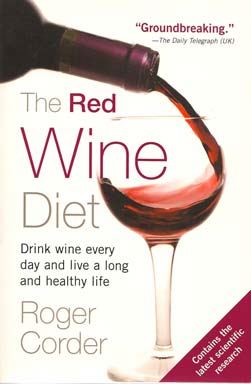 Rober Corder, an M.D. and PhD researcher in the Australia, believes that it is the procyanidins in red wine rather than resveratrol that are the polyphenol compound with the greatest anti-atherosclerotic effect associated with red wine consumption. Corder doesn’t believe resveratrol exists in high enough concentration in red wine, while procyanidin, which is primarily derived from grape seeds, can be present in high concentration in young wines with variation depending on methods of vinification. His investigations have found a lower incidence of heart disease and increased longevity in regions that consume red wines with the highest levels of procyanidins. Corder believes that procyanidins keep heart tissue healthy by regulating endothelin-1, which helps to prevent blood clots and maintain the overall health of veins and arteries. Corder has launched a winery, Pendarves Estate REW, and has released two resveratrol-enhanced wines under the label, The Wine Doctor. The wines contain 100 milligrams per liter of resveratrol compared to 4-8 milligrams of resveratrol per liter found in most red wines. The Oregonian, July 22, 2009. With the possibility that resveratrol could increase longevity, the public has rushed to buy pill supplements containing high doses of resveratrol. A word of caution is need here according to doctors Mehmet Oz and Mike Roizen. Resveratrol slows down how fast your liver metabolizes certain drugs such as statins and calcium channel blockers and this could affect dosing of these drugs. Also, resveratrol supplements are not regulated by the FDA and pills vary widely in actual potency. The supplements must be made in an oxygen-free environment (single-pill foil wraps) to get the active compound. Journal of Experimental & Clinical Cancer Research, July 2009. An Italian study reported that resveratrol appears to prevent virus replication at the cellular level by blocking the ability of a virus to use a cell’s nucleus to replicate its own DNA. Viruses such as the H1N1 swine flu can only replicate inside host cells. The virus studied in this report was the polyomavirus, a type of virus that can stimulate tumor growth. Journal Cardiovascular Pharmacology, December 2009. A review provides evidence that resveratrol and proanthocyanidin are the major compounds present in grapes and wines responsible for cardioprotection. Clinical & Experimental Metastasis, March 2009. Scientists at the University of Puerto Rico exposed human breast cancer cells in the lab to a combination of resveratrol, quercetin and catechin. They found that increased cell death occurred, and after 77 days, the breast cancer tumors treated with the polyphenol cocktail were 30 percent to 50 percent smaller than control tumors. The polyphenol combination also reduced metastases in bone, kidney and liver cancers by about 60 percent. Wines & Vines, December 2009. An ongoing research study in Rioja, Spain, involving nine wineries and two biotech companies and sponsored by the Innovation Department of the Federation of Entrepreneurs of La Rioja and the Economic Development Agency of the Government of La Rioja, has succeeded in producing Tempranillo-based wines from the 2009 vintage with significantly elevated levels of resveratrol. The treatments used in the vineyards have not been disclosed, but are apparently natural and were directed at inducing stress to increase resveratrol. In the winery, techniques were employed to increase extraction and avoid degradation of resveratrol. Journal of Experimental Cell Research, pending, reported in winespectator.com, April 2009. The application of very small amounts of red wine to drug-resistant cancer cells in the lab causes the cells to die immediately. Apparently there is something in red wine pigment that inhibits thioredoxin reductase, increasing the oxygen levels in the cells resulting in death. This effect may not occur in the human body as red wine is metabolized and passed through the liver first. ScienceDaily, May 13, 2009. Research at the University of the Basque Country studied the effect of resveratrol in rats with non alcoholic hepatic esteatosis (ESNA), an accumulation of fat in the liver when alcohol is not involved. Resveratrol was found to reduce the severity of ESNA in rat models. The study concluded, “The administration of natural antioxidants such as resveratrol, two glasses of wine a day, for example, helps to considerably reduce the accumulation of fat in the liver.” Alcohol Clinical Experimental Research, September 2009. This mini-review summarizes recent studies on the possible mechanisms of action, potential therapeutic uses, and bioavailability of the non alcoholic constituents of alcoholic beverages, in particular resveratrol and other polyphenols. The reviewers emphasize that if the nonalcoholic constituents of red wine are to become therapeutic agents, their ability to get to the sites of action needs to be understood. Resveratrol is largely inactivated by the stomach or liver before it reaches the sites where it may have effects. It is possible that resveratrol may be absorbed by the mucous membranes of the mouth, in which case, sipping slowly and allowing red wine to linger in the mouth before swallowing may be healthier. Cellular and Molecular Neurobiology, December 2009. This research supports the role of resveratrol and quercetin in preventive and possibly complimentary antioxidant therapy for several neurodegenerative diseases including Parkinson’s disease caused by oxidative stress and apoptosis of neurons. The pathogenesis of Parkinson’s Disease is believed to begin with mitochondrial dysfunction leading to oxidative stress, damage to mitochondrial DNA, mitochondrial DNA deletions, alterations in mitochondrial morphology, and ultimately neuronal demise (apoptosis). Summary The words of St Thomas Aquinas said over 700 years ago still ring true today: “If a man abstains from wine to such an extent that he does serious harm to his nature, he will not be free from blame.” Equally appropriate is this remark often quoted about giving up alcohol: “You don’t live longer, it just feels like it.”
Wine Headaches: Perplexing Pain
 Currently, there is no agreement on causation of wine-induced headaches, or so-called “red wine headache syndrome.” There are a number of components of wine that have been considered. Sulfites, which are added to wine as an antioxidant and antimicrobial agent do not cause headaches. In high amounts, sulfites can irritate the nasal mucosa and cause an annoying odor of burnt match heads. Alcohol can produce headaches as part of a hangover due to dehydration, but does not cause headaches directly. Linda Buson, a microbiologist at University of California at Davis feels that the cause is sensitivity to biogenic amines (histamine, tyramine, and phenylethylamine) produced by the degradation of amino acids as a byproduct of spontaneous malolactic fermentation. Natural bacterial strains produce more histamine than laboratory strains. Larger wineries often inoculate wine with laboratory strains so headaches may be less of a threat with a large production label. Wines that are aged sur lie and in the methode champenoise, and wines spoiled by Brettanomyces have higher levels of biogenic amines. Amines also occur naturally in a wide variety of aged, pickled and fermented foods, including chocolate, cheese, olives, nuts and cured meats. Many doctors warn headache sufferers away from foods rich in amines, which can also trigger sudden episodes of high blood pressure, heart palpitations, nausea and elevated adrenaline levels. I personally have noticed mild tachycardia a few hours after drinking two glasses of Aubert Chardonnay which is produced with natural bacterial strains and aged sur lie. I believe cheese heightens this effect in me. Interestingly, I have not noticed this reaction with any other California Chardonnay. Frederick Freitag of the Diamond Headache Clinic in Chicago suspects the cause of wine-induced headaches is flavonoid compounds from the skins and seeds of grapes with some contribution by oak barrels. These flavonoid compounds are the same polyphenols that benefit the heart. Other possible causes include residual sugar in combination with alcohol and psychological or suggestive factors in certain people. Also, those who are intolerant to wine may not be able to degrade histamine due to a deficiency of the enzyme diamine oxidase. Ingesting ibuprofen or acetaminophen before drinking wine can block the “red wine headache syndrome” in some people. A study carried out at Bordeaux University and reported in decanter.com (July 16, 2009), found that adding selected lactic bacteria to wine must could reduce biogenic amines in the finished wines. These bacteria, which don’t generate biogenic amines, could compete and overwhelm indigenous bacteria that are producing biogenic amines. University of Berkeley chemistry professor Richard Mathies, who has suffered from wine-induced headaches, has developed a sensor-filled chip that can measure the amount of amines in a wine. The device, based on portable microchip capillary electrophoresis, was first reported in the journal Analytical Chemistry, November 1, 2007. The aim is to produce a small device engineered into a PD that people can use to easily test wines in five minutes. It could also be used to put amine levels on wine labels and to test a wide range of food products such as cheese, chocolate, and fish. Migraine headaches can be triggered by polyphenols in wine that release a chemical, 5-Hydroxytryptamine or 5-HT, and by tyramine and tannins in wine. Grape varietals with thinner skins and lighter tannins, such as Gamay and Pinot Noir may be less risky for the migraine sufferer. 85% of the Asian population have a deficiency of aldehyde dehydrogenase (ALDH). Alcohol is broken down in the liver by two competing enzymes: alcohol dehydrogenase degrades alcohol to the toxic acetaldehyde and aldehyde dehydrogenase converts alcohol to the harmless acetic acid. High levels of acetaldehyde in people with ALDH deficiency cause an unpleasant flushing response along with headaches after drinking wine. |